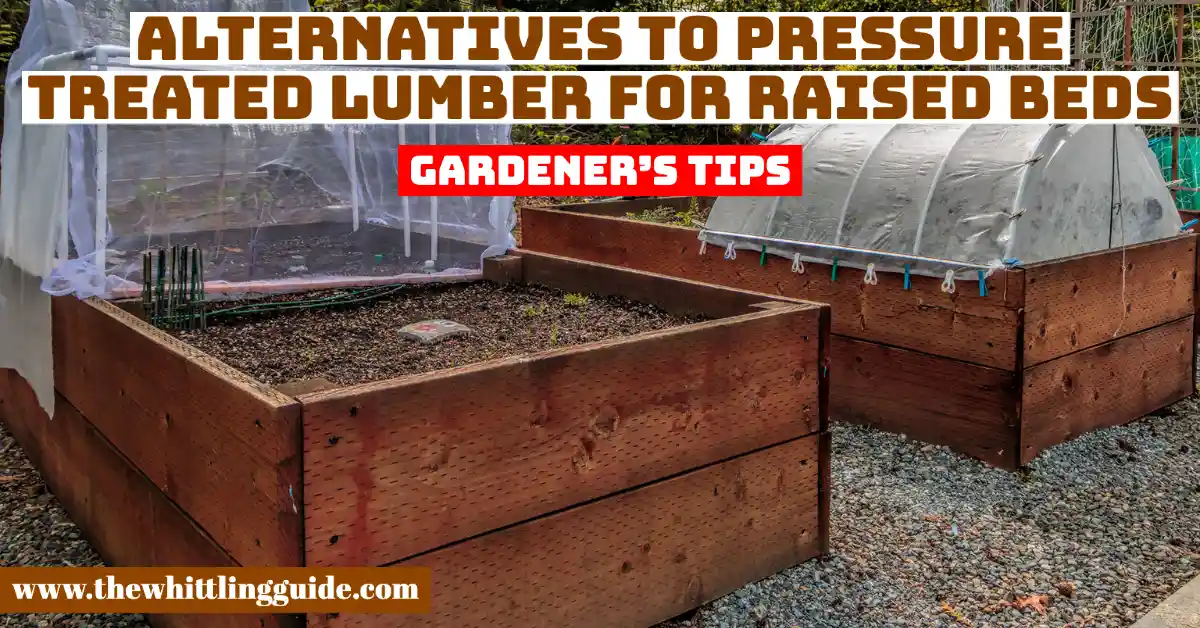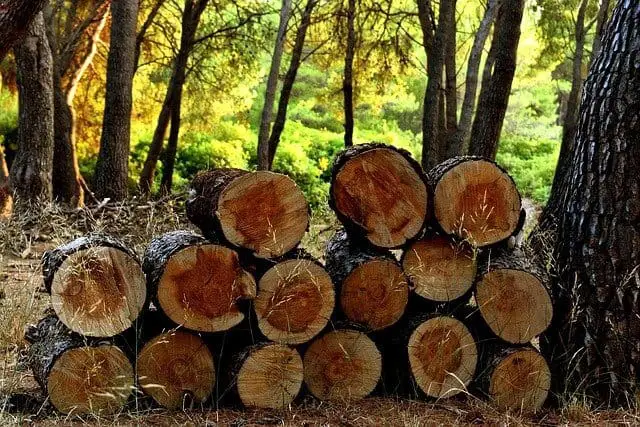
Alternatives to pressure-treated lumber for raised beds
We have some interesting options for you. Each year, the typical homeowner becomes more familiar with the idea of building a raised bed. Maybe you built your first raised beds decades ago, but this year is different. You have decided to upgrade! If you are looking for alternatives to pressure treated wood for raised beds.

You feel more confident and want to do something nice for your family. Unfortunately, you may have turned away from some of your favourite pressure-treated wood options. This may be due to changes in the lumber industry and the availability of wood species.
Why you may not want to use pressure-treated lumber for raised beds
Using pressure-treated lumber for raised beds is not safe since there is a high risk of the chemical preservatives leaching into the garden’s soil. That makes the plants in the raised beds unsafe for human consumption.
The rate at which the chemicals leach into the soil is uncontrollable and undetectable. That makes it harder to manage. Measures are taken to safely use pressure-treated lumber by applying a wood sealer or exterior latex paint, but the process is complicated.
What makes it difficult is that pressure-treated lumber is tough to seal. The black paper lining is another method that keeps your plants safe, but it needs accuracy and extra care. Pressure-treated lumber contains arsenic and chromium that cause cancer in humans when ingested, and you would not want to take the risk.
Plastic Treated Lumber
Plastic-treated lumber consists of recycled plastic that is non-leaching. The recycled plastics include plastic from milk jugs that make raised beds. The plastic-treated lumber has a long-lasting capability that withstands extreme weather conditions of winter freezing and heat from summer.
You have fifty years since the lumber does not get damaged easily. It is also resistant to cracking and chipping. No leaching comes from the lumber. The lumber comes in different colors, and you are allowed to add dye.
There is consistency in its appearance, and it hardly shows scratches. The plastic can still melt when you no longer need it. It is heavy and not as strong as wood. High-quality plastics attract steeper prices.
Cedar Lumber
Cedar is a type of wood that is resistant to rot and weather. It comes in multiple species that include red cedar, white cedar, and yellow cedar. Harsh weather conditions do not affect your raised beds made of cedar.
Cedar is easy to work with since it is stable. It is attractive and protective at the same time. It contains extractive chemicals that prevent your beds from rot. It does not split ends once it dries. There is no need for pre-drilling when making your raised beds, and that saves time.
It is lightweight and easy to assemble. Untreated cedar fades its colour to silver-grey, but treats the exterior using Tung oil. Adding a finish has to be done before assembling the raised beds and before crops are planted. It remains difficult to tell how long cedar lasts due to the various types of wood.
Redwood
Redwood is ideal for raised beds since it has a natural way of resisting rot. It is protective, durable, and beautiful on the beds. Although it comes at a price due to scarcity, it does not create waste and environmental problems like plastic lumber.
Although pine is also durable, redwood lasts twice. It lasts up to twenty years. Redwood easily blends with outdoor furniture. Redwood is safe to use since it does not contain harmful chemicals. Redwood has different parts that bring different results in longevity. The heart of the wood can be the best wood that gives maximum performance. Redwood is resistant to water.
Treated Pine
Treated pine lasts as long as five years. Treating pine increases the lifespan of the raised beds. Be careful of the substances you used to treat the pine since the main goal is to keep your vegetables safe for human consumption.
Not all types of pine are safe to use. The pine undergoes a water-based wood-preservation process that is free from arsenic. That makes it a perfect wood for home vegetable gardens.
Composite Lumber
Composite lumber is a preservative that consists of fibre, plastic, and binding agents. Binding agents consist of glue, and the lumber has recycled materials that include UV ray protection. The protection makes your lumber last longer.
The wood-plastic preservative is triggered more than standard wood. It requires minimal maintenance, and that makes it more durable. As much as it stays longer, it contains the unsafe chemicals that come from the glue. It leaches into the soil and gets to the vegetables.
Creosote
Since pressure-treated lumber might not be ideal for use on raised beds, Creosote is an option. Creosote is a wood preservative that comes from coal tar. It also works as a pesticide. Creosote treated poles and marine buildings since it is protective of wood from fungi and insects.
However, it is carcinogenic, and that means it contains toxic chemicals. The chemicals leach into the soil and get absorbed by the plants. That questions the use of the preservative as a substitute for pressure-treated lumber.
Douglas Fir (Wood)
Douglas Fir lasts up to 15 years before replacement. It is resistant to rot, and that makes it durable. It is an economical type of wood that suits low-budget users. It is affordable and safe for vegetable consumption. The only setback lies in the wood that has to be replaced with time. It adds beauty and structural dignity. The lifespan of the wood lies in the quality of the wood.
White Pine Or Hemlock (Wood)
Although white pine is effective in making raised beds, it is not rot-resistant. That means it has to be replaced. Painting the pine boards ensures a long-lasting time for raised beds.
Pine is a softwood that is easy to work with. The smooth grain makes it strong. It is resistant to wear and tear, and that makes it ideal for the raised beds. Use raw linseed to increase the longevity of the wood.
Black Locust (Wood)
Black locust is durable in the manner in which it resists rot and decay. The chances are slim that it will get attacked by insects. It is easy to assemble since no tools are required.
Even when exposed to bacteria and fungi, you do not need toxic chemicals to eliminate colours infection. The life of Black locust exceeds fifty years, and that makes it valuable.
Concrete Blocks
Concrete blocks allow the soil to fill the gaps, and your vegetables grow without lacking natural resources. Garden beds made of concrete blocks are heavy to move and require regular maintenance. They allow weed to make waste through the gaps. Concrete blocks increase the ph level of the soil.
See our post on pressure treated pallets.
- Grain and Sheen: Teak Oil versus Danish Oil Uncovered - January 10, 2024
- The Cherry on Top: Crafting the Perfect Cutting Board - January 9, 2024
- Polyurethane Water-Based vs Oil-Based: Choosing the Right Finish - January 8, 2024
